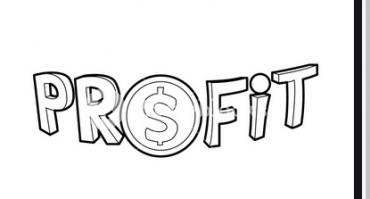
canadiancontractor
The Myths of Contracting Part 1: When your price is greater than your costs, you profit!
Some contractors choose to take what they can get rather than decline unprofitable work
In our new series “The Myths of Contracting” Steve Ryan, president of MMI Professional Services, exposes some of the basic misunderstandings common among contractors trying to run successful businesses. In this first installment, Ryan explains why making a profit is not as simple as just making sure the price you agree on with your customer is greater than the cost to you to build the project. 
By Steve Ryan
Everyone knows that the price on a job needs to be higher than the cost to do the work. But how much higher does it need to be? Perhaps you realize that overheads (things like vehicles, insurance, rent, YOUR SALARY) are not generally counted as costs in the budget of each job you do. That means when you calculate how much you will make on a job you need to allocate some of that to pay your company’s overhead costs before you can be confident it is profitable.
Not telling you anything new so far? OK, well here’s the danger: Following the logic that something is better than nothing, some contractors choose to take what they can get rather than decline unprofitable work. They do that because they can’t determine how much they need to earn on any given job. The next thing they know the total earned across all their work doesn’t add up to those overheads that must still be paid.
That cycle hurts you in several ways:
- When you do it, you lose money and go out of business
- When competitors do it, they drive prices down to where nobody can make money
- When you take a job that doesn’t earn its fair share, that inhibits your capacity to take on another job that could.
It also hurts customers and the industry in general in a fourth way: When contractors realize a project isn’t paying its way, they attempt to cut costs. They might use cheaper materials, cut corners, rush the work, or bail on the job entirely.
What do you do about it? I’m sorry to say I can’t offer a nice tidy solution. We can’t get all contractors to set their price correctly. We can’t make customers insist on paying the price needed to do the work correctly. But you can do the arithmetic to determine a price that will safely earn its share of overhead costs.
If you have an accountant, they would have prepared an Income Statement for last year. Look for two amounts:
- Your total sales for the year
- The sum of all your Overhead Costs for the year (sometimes called “Fixed Costs”).
Divide amount #2 by amount #1 (Overhead divided by Sales). That number represents the percentage of everything you sold last year that was spent on overheads. Use that percentage on future jobs to gauge the price it will take to be truly profitable. For any job, multiply that percentage (it will be the same percentage for all jobs) by the price you are considering. You will get a dollar amount.
Add that to your estimated job costs. That sum is what accountants call “Fully Absorbed Cost” for the job.
Unless a price exceeds this “Fully Absorbed Cost” watch out! Accept too many jobs like that and you won’t be able to pay overhead costs. Your business will lose money. Will this magically change the price you can get for the job? No. But it may help you with the discipline to step away from a poor prospect and commit to developing a better one.
MMI Professional Services is committed to the success of contractors by helping them develop the business and management skills they need . For information on ways to run a better building business contact the writer at steveryan@mmiproservices.com

Leave a Reply